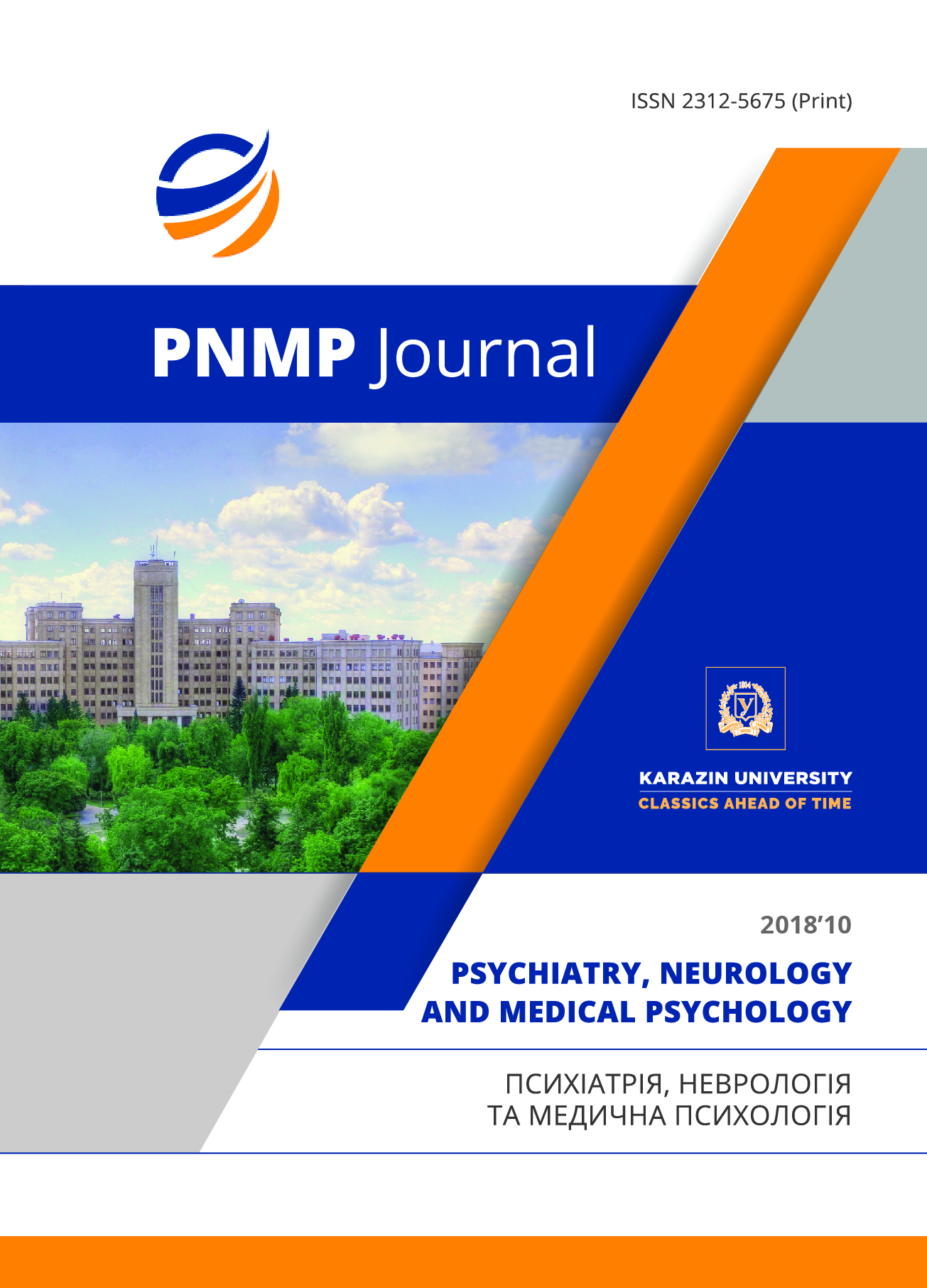Peculiarities of frosting response in participants of martial actions with clinical manifestations of post-traumatic syndrome and partial loss of vision
Abstract
In the study of frustration reactions and stress tolerance in combatants with eye trauma and partial loss of vision against the background of clinical manifestations of posttraumatic syndrome (54 people), significant differences were found between those who took part in combat actions from clinical manifestations of post-traumatic syndrome without injury (46 people) and a group of patients having a domestic injury of the organs of vision with partial loss of it (59 people). Combatants demonstrated an extrapunitive response direction and a necessary recalcitrant type of reaction. In second place is their ego-defensive type of reaction. The presence of depressive, asthenic and aggressive response options. In the group with no injury, extrapunitive direction was observed more often. In the domestic character of damage, these indicators were significantly lower and approached the standard level. Participants in hostilities experienced varying levels of stress tolerance, depending on the methodology, and low levels in the case of domestic trauma. Comparison of the presence and relevance of frustrating and stressful factors showed their greater frequency and significance among combatants with and without injury. Thus, participants in combat operations with an eye injury with partial loss of vision and without it and the clinical manifestations of the post-traumatic syndrome are unidirectional and more pronounced with eye injury changes. With a domestic injury, they are much lower. This indicates the significant role of clinical manifestations of posttraumatic syndrome in the occurrence of mental disorders. This suggests the possibility of including in the action methods of psychological protection of the individual and adaptation to the presence of stress-frustration.
Downloads
References
Трихліб В. І., Дуда О. К., Майданюк В. П., Ткачук С. І. Структура бойової травми залежно від характеру уражувальних факторів під час деяких сучасних локальних війн, військових конфліктів (огляд літератури) // Сімейна медицина. 2015. № 4 (60). С. 63 – 70.
Breeze J. Surface wound mapping of battlefield occulo-facial injury / J. Breeze, LS Allanson Bailey, NC Hunt et al. // Injury. 2012. Vol. 43 (11). Р. 1856–60.
Жупан Б. Б. Удосконалення організації спеціалізованої офтальмологічної допомоги в ході медичного забезпечення антитерористичної операції // Проблеми військової охорони здоров’я. 2016. Вип. 47. С. 11–15.
Абдряхімов Р. А. Фрустраційні реакції в учасників бойових дій з травмою очей та частковою втратою зору // Психіатрія, неврологія та медична психологія. 2018. № 9. С. 72 – 77.
Малкіна-Пих І. Г. Психологічна допомога в кризових ситуаціях – М.: Изд-во Ексмо. 2005. – 960 с.
Тарабрина Н. В.. Практикум з психології посттравматичного стресу. (Серія «Практикум з психології »). СПб.: Пітер., 2001. – 272 с.
Агаєв Н. А., Кокун О. М., Пішко І. О., Лозінська Н. С., Остапчук В. В., Ткаченко В. В. Збірник методик для діагностики негативних психічних станів військовослужбовців: Методичний посібник. – К.: НДЦ ГП ЗСУ, 2016. – С. 208–225.
Тест Розенцвейга. Методика рисуночной фрустрации (модификация Н. В. Тарабриной) / Диагностика эмоционально-нравственного развития. Ред. и сост. Дерманова И. Б. – СПб., 2002. С.150-172.
Методика определения стрессоустойчивости и социальной адаптации Т. Холмса и Р. Paйха (Holmes T., Rahe R., 1967) // Д. Я. Райгородский. Практическая психодиагностика. – Самара: БАХРАМ, 2000. – 672 с.
Щербатых Ю. В. Психология стресса/ Ю.В.Щербатых. - М.: Изд-во Эксмо, 2005. - 304 с.

